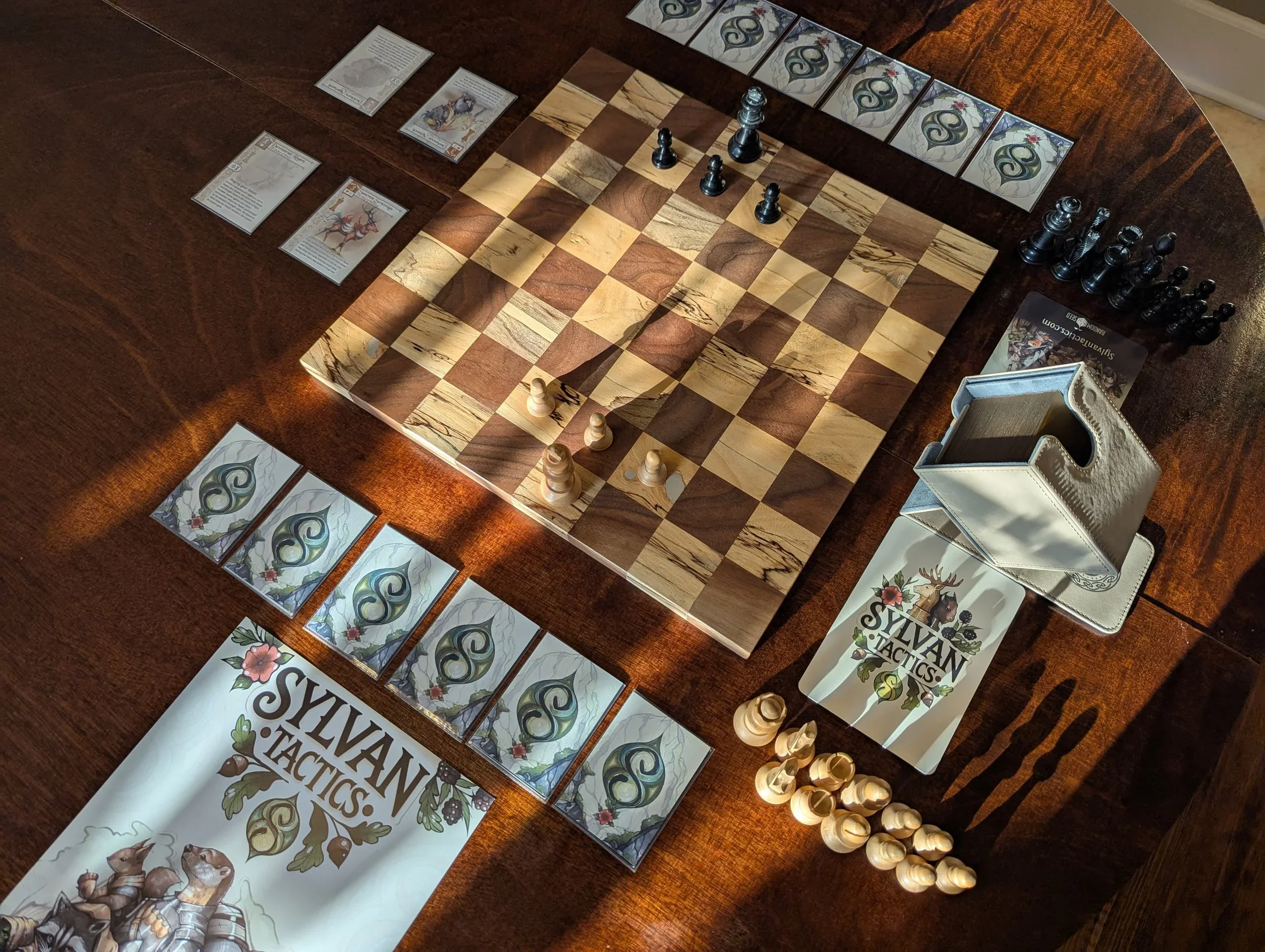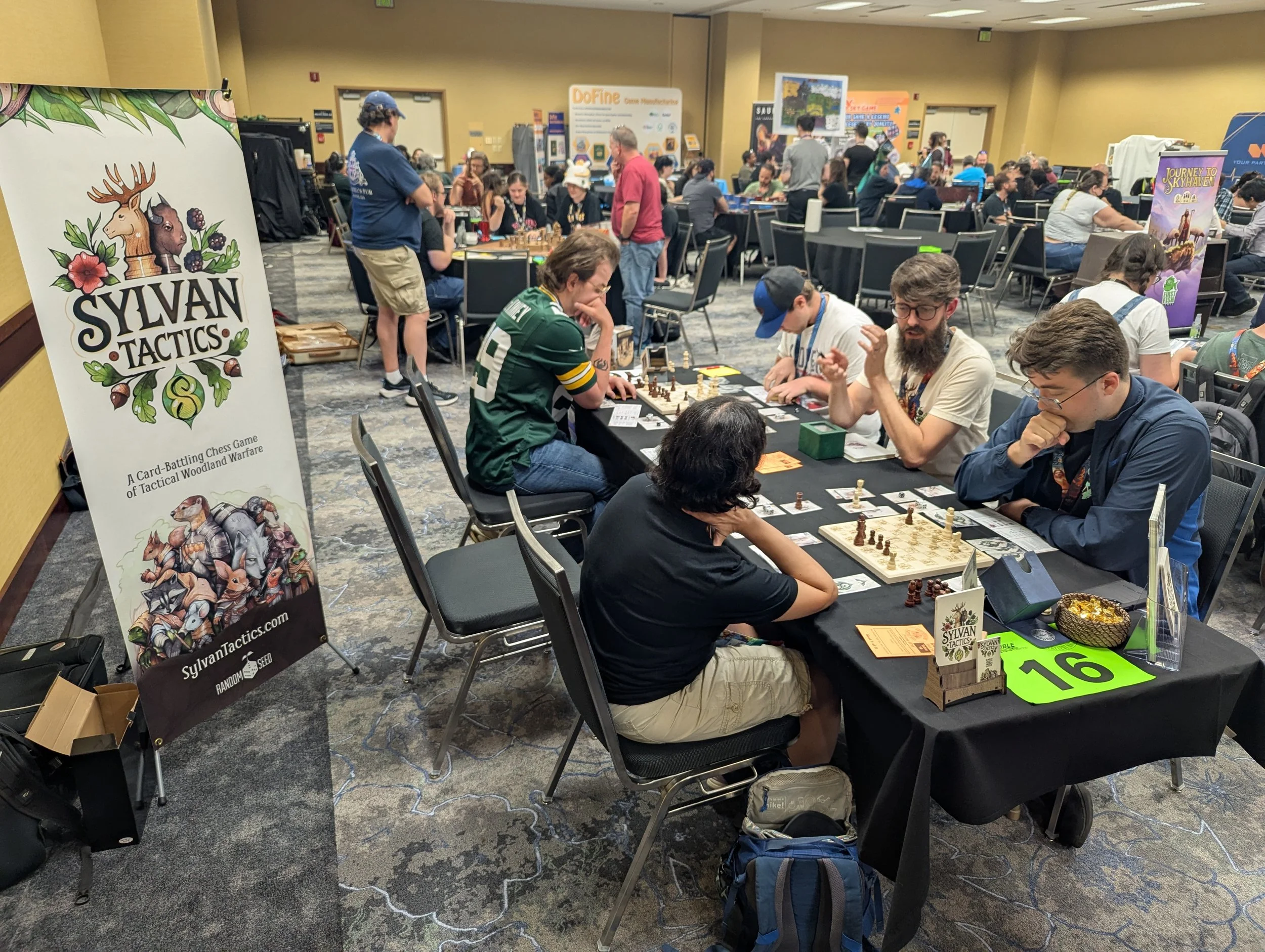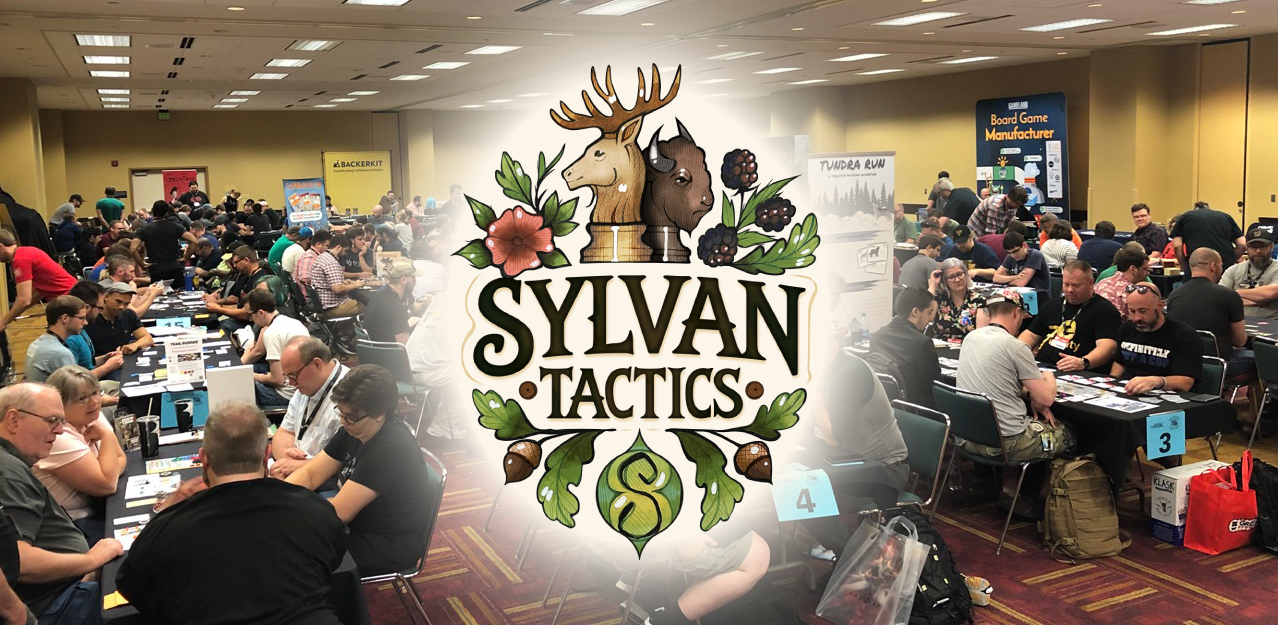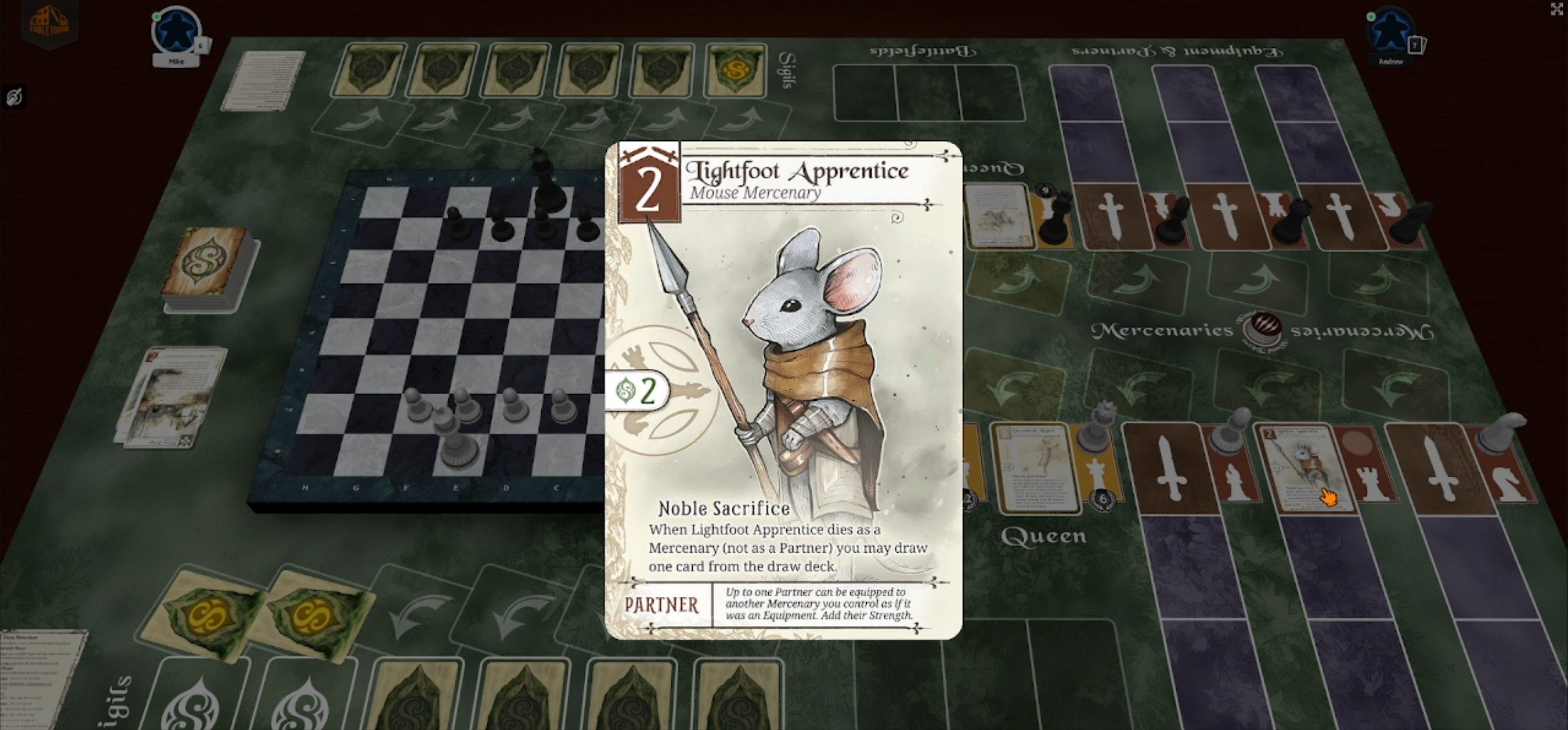
Solving “Feels Bad” Moments in Tabletop Game Design

Sylvan Tactics: Chess-Inspired Lessons in Design Iteration

Retrospective: What We Learned Bringing Sylvan Tactics to Gen Con’s First Exposure Playtest Hall

Bringing Sylvan Tactics to Gen Con: Our First Exposure Playtest Hall Debut

Logo Reveal: The Look of Sylvan Tactics

What’s Next for Sylvan Tactics?

Sylvan Tactics Goes Digital: Building a Forest of Possibilities
Choosing the Right Components: Trackers for Sylvan Tactics

Designing Around Tariffs: How Minimalist Games Offer a Surprising Advantage

